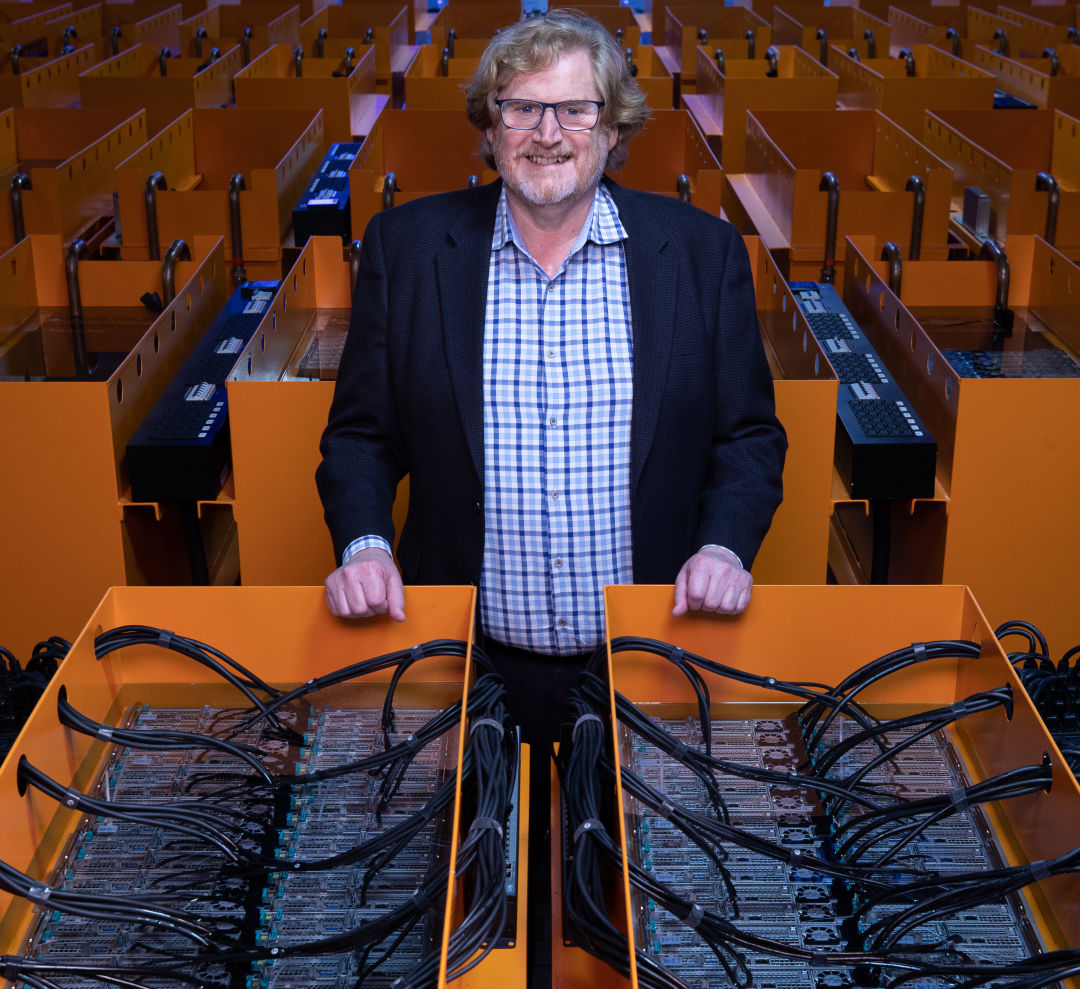Did You Know That Katy Is Home to a Massive Supercomputer?

Image: DownUnder GeoSolutions
Right now, one of the fastest supercomputers on the planet—a new system about half the size of a football stadium—is nestled within a 20-acre space in Katy dubbed the SkyBox Houston Data Center.
The supercomputer, named “Bubba,” uses enough energy per month to power 12,000 houses use at max capacity. It was created by a group based in Perth, Australia called DownUnder GeoSolutions (DUG, for short), who came to the Bayou City about six years ago looking to expand their business to Houston's oil and gas market.
“The oil and gas industry has always been one of the largest users of supercomputers,” says Matthew Lamont, co-founder of DUG. “It takes those instruments to really help the oil and gas industry.”
So how did this supercomputer, which will be one of the largest in the world when planned expansions are completed later this year, end up in Katy?
Well, this isn't DUG's first rodeo. When the company officials decided to create their new system, they conducted a worldwide search before opting to plant it in Katy, just a few miles away from their existing Houston offices in the Energy Corridor. They were drawn to Katy by the prospect of cheap electricity and fiber optic availability that would provide the rapid connectivity the system will need.
Bubba, which was started up in May, is a part of DUG's cloud network, DUG McCloud, which is comprised of Bubba along with the computer systems already set up in Perth, Kuala Lumpur, and London. These supercomputer systems work together to form a massive cloud system, which is then used to produce detailed information about drilling sites for extracting oil and gas, employing the company's own imaging software and seismic processing software to help energy companies figure out the best locations for sites.
Having access to Bubba and the cloud system allows for analyzing and gathering data at a rate that is light years beyond the capabilities of the average laptop. Companies that decide to use Bubba can either use the DUG software or plug in their own software to find this information.
Bubba currently has about 5,000 Intel processors hooked together to analyze data, but will be comprised of around 40,000 Intel Xeon servers after an extension slated to begin later this year, giving the system even faster processing power.
Although most energy companies have chosen to build their own supercomputers, but with Bubba, and thus DUG McCloud, located in the metroplex, they’ll now have another option, according to Lamont. By using Bubba, companies will save on the cost of building these machines, and the expense of running and cooling them.
However, there are some concerns about the sheer amount of energy these systems consume. A Forbes report in 2017 noted that such data centers built around these monolithic creations can suck up massive amounts of power, finding that they consume about 40 percent more power than the entire United Kingdom.
At the 2019 Rice Oil and Gas Supercomputing Conference earlier this year, DUG CTO Phil Schwan presented on the importance of sustainability within the supercomputer industry. Schwan noted that instead of using air conditioning to cool down the supercomputer, they’re using polyalphaolefin dielectric fluid, a liquid coolant. The computer nodes are immersed in the coolant, which is being pumped through 700 tanks, which cuts down significantly on the rate of energy they consume hourly.
At the moment DUG doesn’t have a solution to the current 15 megawatts it’s using per hour, but they are aware it's becoming increasingly important to be cognizant of how much energy their machines consume, Lamont acknowledged. “The products we use to save energy are becoming very important to the oil and gas industry if we want to maintain our license to operate globally,” Lamont said.




